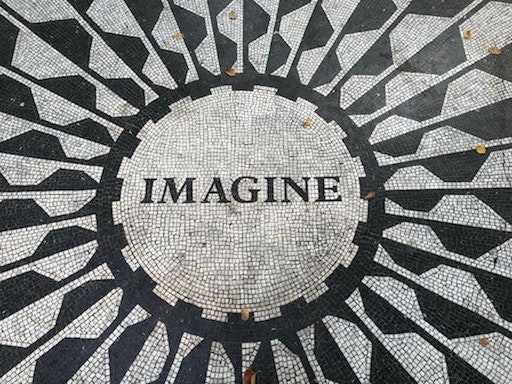1 The role of imagining and dreaming in inquiry
Whenever the future is considered as a pregiven – whether this be as the pure, mechanical repetition of the present, or simply because it ‘is what it has to be’ – there is no room for utopia, nor therefore for the dream, the option, the decision, or expectancy in the struggle, which is the only way hope exists.
Freire’s argument gets to the core of what an appreciative approach aims to do – to imagine and then create a future that is different from the now. By giving space to dreaming, imagining, hoping, we make spaces for thinking and doing in different ways. But, this dreaming and imagining is rooted. It isn’t fanciful and fantastical, where somehow we imagine something so wondrous that there is no way to begin to action it. Instead, the dreaming and imagining phase arises from the stories we have told, the practices we find exciting and energising, and so from real-life practices and ideas we can explore.
Watkins and Mohr (2001) argue that change (whether individual or organisational) can only happen at the speed of imagination, while Zandee (2013) argues that ‘adventure[s] of imagination … [are] a necessary source of renewal in civilisation’ (Whitehead in Zandee, 2013, p. 79). The importance of imagining or dreaming of difference (in practice or ideas) can be individual (where change and difference only involves the individual), but more often it involves collective processes, where sharing in a common imagining or dream of a different future allows everyone involved to work towards that vision.
Therefore, the dreaming phase is a process of ‘liberating our collective aspirations’ (Bushe, 2007, p. 5). We do this by bringing our different stories together, identifying generative aspects that can form the basis of imagining a different future and then surfacing common values, which can form the basis of action. As noted by Zandee, developing openness to difference, and working towards something yet to be experienced, relies on ‘develop[ing] a trustful sense of ensemble that makes us dare to travel further’ (Zandee, 2013, p. 80).
Activity 1 Imagining and dreaming a different reality
Imagine you are setting up a new nursery, school, college, university, department or team. This new context is fictional, and has no boundaries to what can happen (e.g. no financial restrictions, no set policy agendas etc.). Now think about the focus of your inquiry, which you began to develop in Session 2. Using an empty presentation slide, online whiteboard or large piece of paper, start to create a collage of images, words or phrases that allow you to dream differently about your inquiry focus.
- What could it be like?
- What would it feel like/sound like?
- What would practices look like?
- What would the resources/environment be like?
- Who would be there?
- What sorts of discussions/decisions would take place?
Comment
This activity is designed to release you from some of the challenges we face in our contexts on a day-to-day basis. In doing so we can begin to imagine differently, and begin to re-see the ways we currently act, think and respond. Making ourselves more aware of our own practices and why we act in the ways we do, is an important step in allowing ourselves the spaces to imagine and dream as part of appreciative inquiry. One aspect of this awareness, is knowing what narratives and structures around us help maintain the current and why they can be so powerful in framing what we think and do.
In the next section you will start to explore imagining and dreaming.

